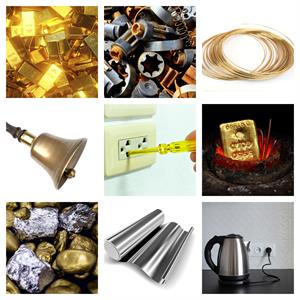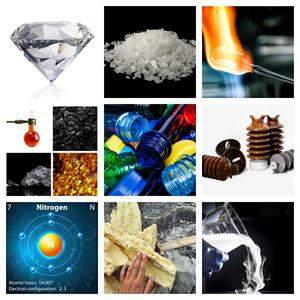PDF chapter test TRY NOW
The elements in the periodic table are classified as metals and non-metals based on their physical and chemical properties. There are around \(95\) metals and \(17\) non-metals in the periodic table.
Physical properties of metals:
Metals are electropositive elements where they donate electrons to form a stable configuration. A physical property can be observed and measured without altering the sample's chemical identity.

- Malleable (can be drawn into thin sheets)
- Ductile (can be drawn into wires)
- Lustre (shine) with silvery grey or golden yellow in colour
- Sonorous (makes a ringing sound when hit)
- Most of the metals are solid at room temperature except mercury which is liquid at room temperature.
- All metals are hard except sodium and potassium.
- Metals have \(1\) to \(3\) electrons in their outermost shell.
- Metals are good conductors of heat and electricity (they have free electrons in their outermost shell.)
- Metals have a high density (mass of unit volume of a material substance)
- Metals have high melting and boiling points because of their strong metallic bonds except for sodium and potassium, which has low melting and boiling points.
The materials which generally possess the above properties are called metals.
Example:
Iron, copper, aluminium, calcium, magnesium, gold, silver etc.
Physical properties of Non-metals:
Non-Metals are electronegative elements where they gain electrons to form a stable configuration.

- Non-metals come in a wide range of colours.
- Non-metals have no lustre in nature (as they have no metallic lustre and do not reflect light) except iodine and diamond.
- Non-metals are non-malleable in nature (as they are very brittle, they cannot be drawn into sheets) except carbon.
- Non-metals are non-ductile in nature (as they are very brittle, they cannot be drawn into wires.)
- Non-metals are soft except diamond.
- Non-metals are poor conductors of heat and electricity, except graphite.
The materials which generally possess the above properties are called Non-metals.
Example:
Oxygen, carbon, sulfur, hydrogen, phosphorous, nitrogen, chlorine etc.
Properties of Metalloids:
- They show the characteristics of both metals and non-metals and are known as metalloids.
- There are around \(8\) elements in the periodic table that are called metalloids.
Example:
Boron (B), Silicon (Si), Germanium (Ge), Arsenic (As), Antimony (Sb), Tellurium (Te), Polonium (Po).
